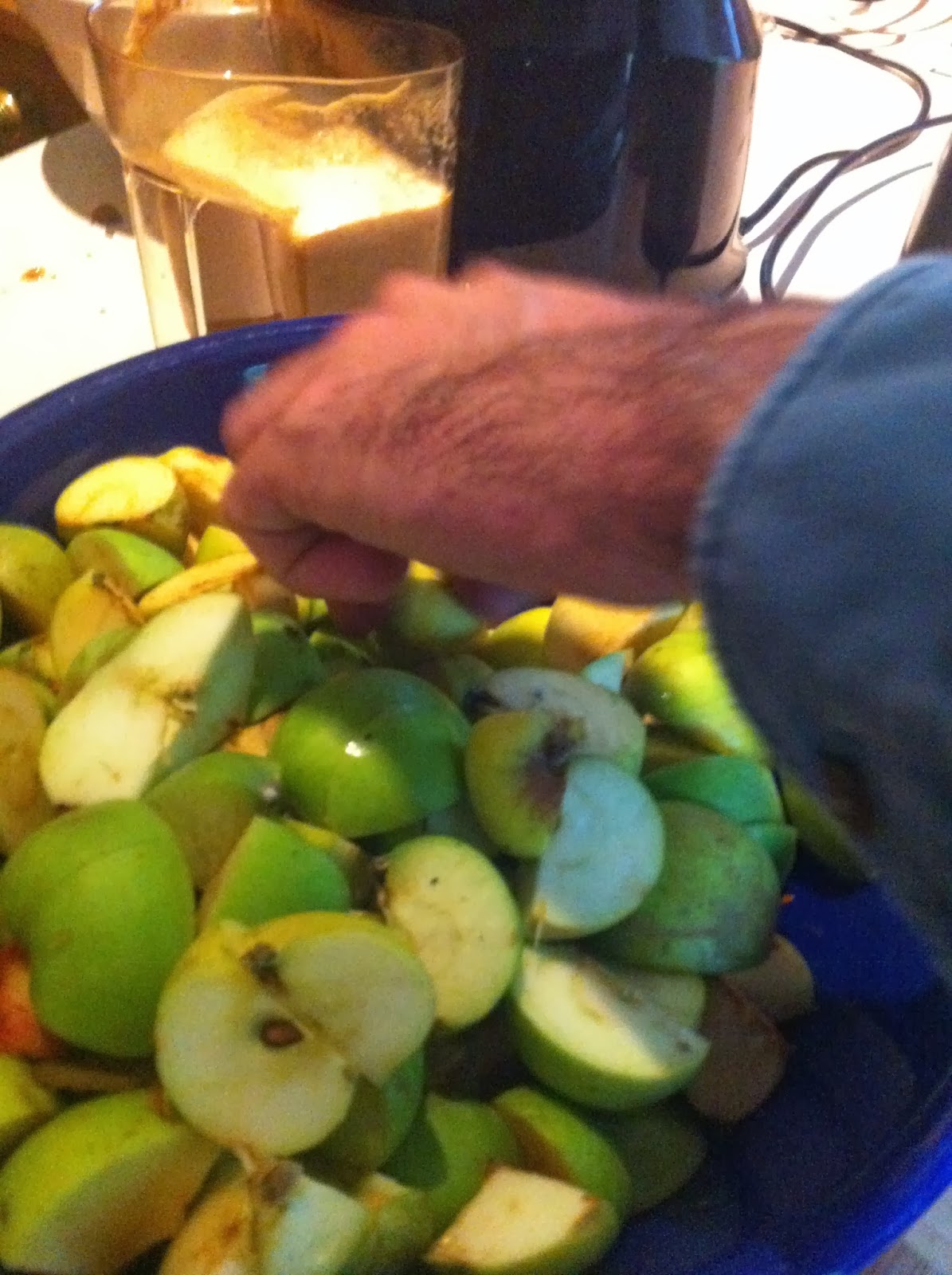Seasonal Notes
It's good to take stock and make notes every season. Fruit and Nut Network members Kris and Marnie share their experiences from different places....From the Mid Mountains
by Kris Newton...in the Upper Mountains
by Marnie O'MaraSummer is the season of plenty here in the mountains. Our garden has provided us with an abundance of produce over the past few months - we've eaten our fill, shared with friends, swapped for things we don't grow but others do, frozen, dehydrated and bottled enough to get us through the less productive Winter.
.png) At a recent Kitchen Garden Produce Swap we swapped some cucumbers for a large quantity of
crab apples. I know lots of people have these in their gardens and think
they aren't the most useful of fruits. We brought home about two kilos
of crab apples from the swap as we wanted to make enough pectin to see
us through the next berry-jamming season. We also used them to make two
batches of fabulous fizz, one lot paired with rhubarb. The result was
delicious - thirst quenching and not too sweet.
At a recent Kitchen Garden Produce Swap we swapped some cucumbers for a large quantity of
crab apples. I know lots of people have these in their gardens and think
they aren't the most useful of fruits. We brought home about two kilos
of crab apples from the swap as we wanted to make enough pectin to see
us through the next berry-jamming season. We also used them to make two
batches of fabulous fizz, one lot paired with rhubarb. The result was
delicious - thirst quenching and not too sweet.Our three apple trees are very sensible - they pretty much stagger the ripening of their fruit so that when one is finished the next begins (actually, my very practical hubby carefully chose which trees to plant with this in mind). This means we have been able to pick apples every day during January and February - and today, the first day of Autumn, we still have lots of apple days ahead.
.png) This year we have also have a bumper
crop of grapes! This is the vine's third season - last year we had a few
good sized bunches, and this year there are masses of huge purple/black
bunches of beautiful, juicy grapes. I see the birds eyeing them off,
longing to get stuck into the fruit, however our garden cage keeps the
birds out and our precious bounty safe.
This year we have also have a bumper
crop of grapes! This is the vine's third season - last year we had a few
good sized bunches, and this year there are masses of huge purple/black
bunches of beautiful, juicy grapes. I see the birds eyeing them off,
longing to get stuck into the fruit, however our garden cage keeps the
birds out and our precious bounty safe.Surveying our garden this morning I see that we'll soon be picking kiwi fruit and cape gooseberries.
Have seasonal notes for the lower mountains or elsewhere in the mountains? We'd love to hear from you! More news from the Fruit and Nut Tree Network.
.png)






